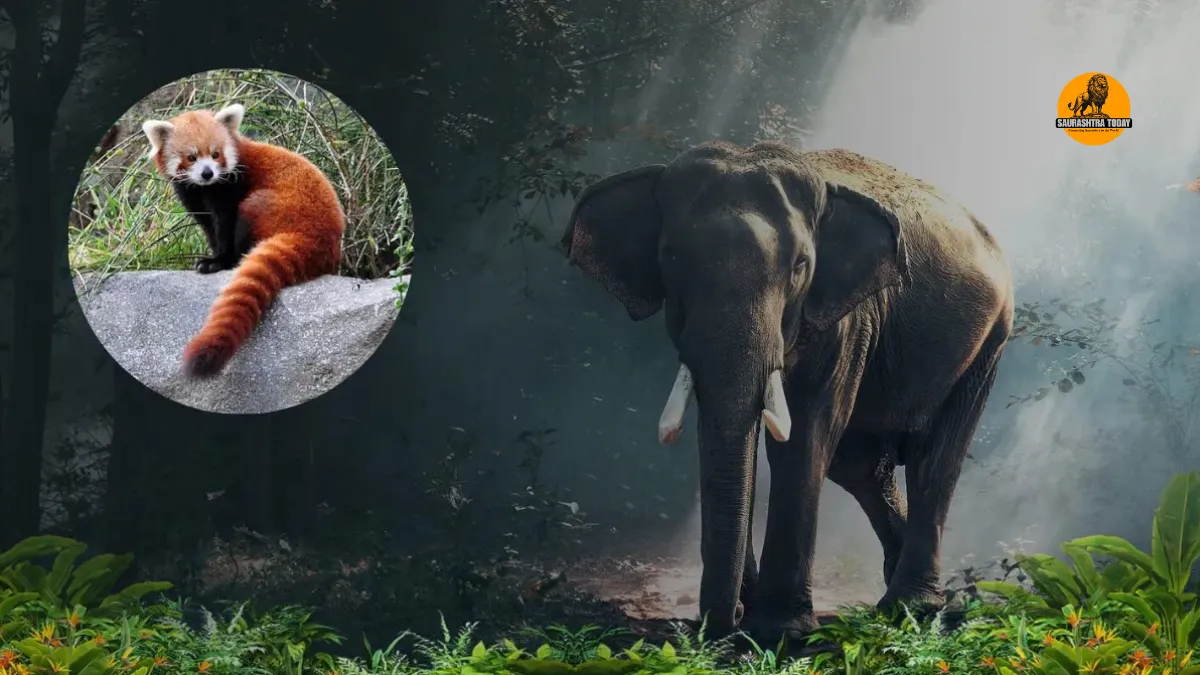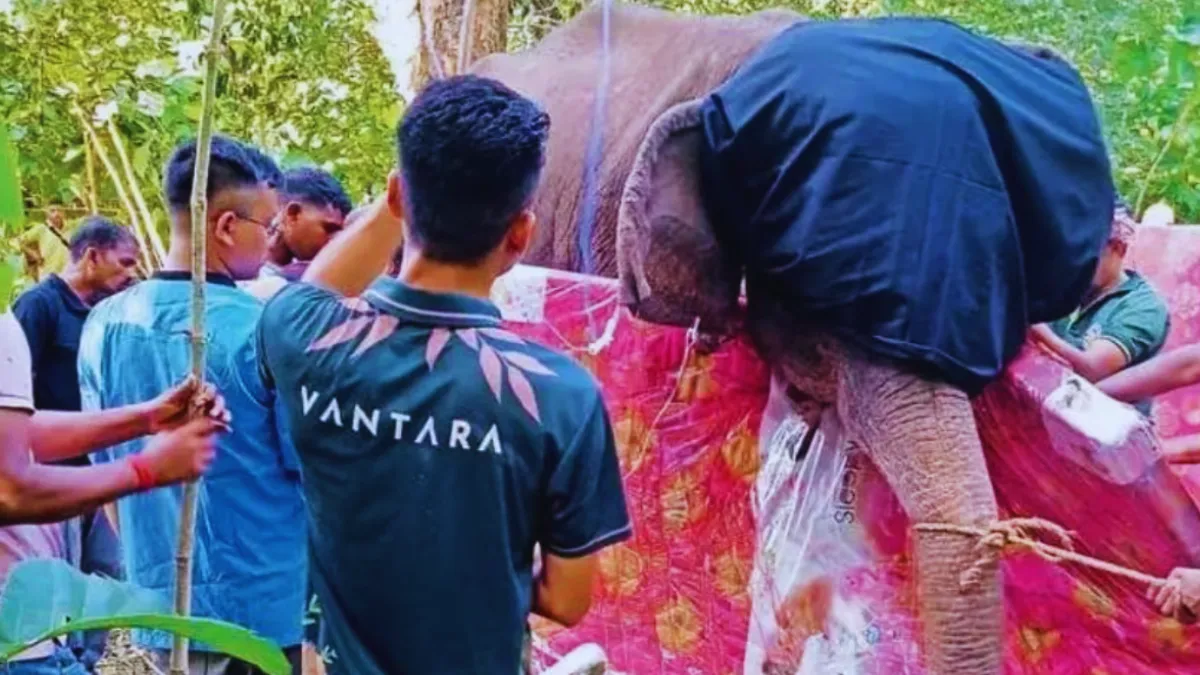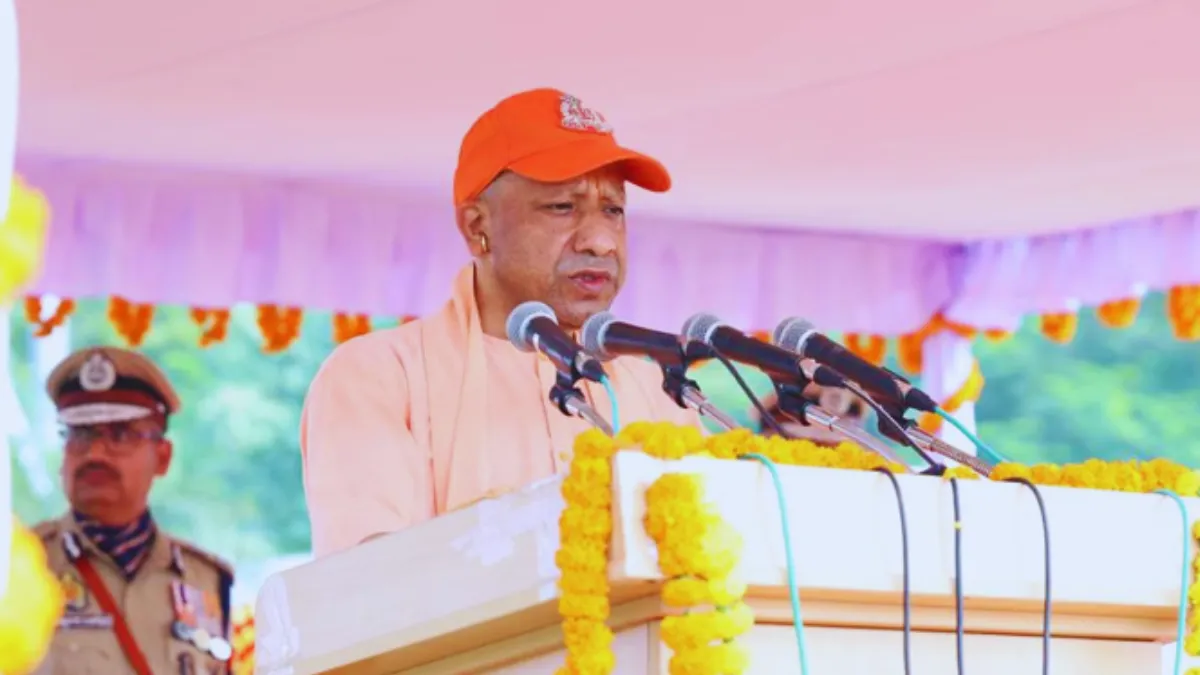Vantara of India is redefining wildlife conservation and rescue efforts in Asia. Located in Jamnagar, Gujarat, this sprawling sanctuary has become one of the most talked-about wildlife centers globally due to its unprecedented scale, state-of-the-art facilities, and innovative approach to animal welfare. Spanning over 3,500 acres and housing more than 150,000 animals across 2,000 species, Vantara of India is truly a landmark in modern wildlife conservation.
What is Vantara of India?
Vantara of India is a massive wildlife rescue and rehabilitation center established by the Reliance Foundation under the leadership of Anant Ambani. The name “Vantara” itself signifies “forest protector,” reflecting the sanctuary’s mission to protect and nurture wildlife rescued from abuse, illegal trade, or challenging natural conditions. The center is designed to provide animals with a safe, natural, and supportive environment where they can recover, thrive, and contribute to conservation and research efforts.
The facility has become a global reference for private wildlife sanctuaries, combining luxury-scale infrastructure with high ethical standards. While it is not open to the general public, Vantara of India plays a critical role in India’s broader conservation ecosystem.
Key Features of Vantara of India
Here is a quick overview of the most important features of Vantara of India:
| Feature | Details |
|---|---|
| Location | Jamnagar, Gujarat, India |
| Area | 3,500+ acres |
| Number of Animals | Over 150,000 |
| Number of Species | 2,000+ |
| Specialized Centers | Elephant Sanctuary, Wildlife Hospital, Research Centre |
| Management | Reliance Foundation, Greens Zoological Rescue and Rehabilitation Centre |
| Inauguration Date | March 4, 2025 |
| Public Access | Not open to general public |
This table demonstrates the scale and sophistication of Vantara of India, positioning it as a unique facility worldwide.
Vision and Mission Behind Vantara of India
The vision behind Vantara of India goes beyond simply rescuing and rehabilitating animals. The sanctuary focuses on:
- Rescue and Rehabilitation – Taking in animals rescued from illegal wildlife trade, abusive conditions, or environmental disasters.
- Research and Education – Conducting scientific research in wildlife medicine, behavior, and conservation strategies.
- Public Awareness and Advocacy – Although not open for public visits, the sanctuary participates in educational campaigns and partnerships with conservation organizations globally.
- Global Standards of Animal Welfare – Implementing state-of-the-art medical care, spacious enclosures, and naturalistic habitats for all species.
The Reliance Foundation emphasizes that the facility is not only about conservation but also about setting new benchmarks for ethical, transparent, and large-scale wildlife management.
Facilities at Vantara of India
Vantara of India is divided into multiple specialized facilities to address the diverse needs of its residents:
1. Elephant Sanctuary
The sanctuary’s elephant facility spans nearly 998 acres, making it one of the largest elephant sanctuaries in the world. This section is equipped with:
- Hydrotherapy pools for physical therapy and rehabilitation
- Medical imaging facilities including MRI and X-ray
- Specialized veterinary care for all stages of life
- Spacious enclosures replicating natural habitats
The elephant sanctuary also serves as a research hub for studying elephant behavior, health, and social dynamics.
2. Wildlife Hospital
The Wildlife Hospital and Research Centre occupies over 100,000 square feet and is designed to treat a wide variety of species. Facilities include:
- MRI, CT scans, X-ray, and ultrasound machines
- Surgical suites for complex procedures
- Quarantine and isolation units
- Nutrition and rehabilitation zones
This hospital is critical in providing advanced medical care to rescued animals and conducting ongoing veterinary research.
3. Research and Conservation Centre
The research wing at Vantara of India focuses on wildlife biology, breeding programs, and conservation genetics. Collaborations with global wildlife organizations and universities ensure that the sanctuary remains at the cutting edge of wildlife research.
Conservation Efforts and Global Recognition
Vantara of India has received worldwide recognition for its efforts:
- In 2025, it was awarded the Prani Mitra Award in the corporate category by the Animal Welfare Board of India.
- International conservation icons like Dr. Jane Goodall, Sir David Attenborough, and Leonardo DiCaprio have praised the sanctuary’s initiatives.
- The facility actively contributes to species preservation programs, particularly for endangered and threatened species in India.
These acknowledgments reinforce Vantara of India as a global benchmark for private conservation initiatives.
Controversies and Legal Scrutiny
Despite its achievements, Vantara of India has faced legal and ethical scrutiny:
- In August 2025, the Supreme Court of India appointed a special investigation team to examine allegations regarding animal acquisition and welfare practices.
- Concerns included the legality of animal transfers, breeding practices, climate and habitat conditions, and financial transparency.
- The official report concluded that Vantara complied with all wildlife laws, and no violations were found, affirming the center’s commitment to ethical animal management.
While these events sparked debate, they also highlighted the transparency and accountability measures implemented at the facility.
Ethical Considerations and Public Perception
One of the ongoing discussions around Vantara of India is its accessibility and public perception:
- Private Ownership: As a privately managed facility, critics argue that public engagement is limited.
- Transparency: Some concern exists about the facility’s scale and association with high-profile events.
- Animal Welfare: The sanctuary emphasizes its compliance with international standards, ensuring that welfare always remains the priority.
Overall, while debates continue, the sanctuary is recognized as a pioneering model in ethical, large-scale wildlife conservation.
Benefits and Future Plans of Vantara of India
Vantara of India is more than a sanctuary; it represents a long-term investment in wildlife conservation:
- Species Preservation: Focus on endangered species like elephants, big cats, and reptiles.
- Medical Innovation: Plans to expand research in wildlife genetics and disease prevention.
- Environmental Awareness: Collaboration with NGOs and universities for public education and conservation programs.
- Expansion Projects: Additional sanctuaries and research labs are planned, increasing the facility’s scope to over 5,000 acres.
These efforts indicate that Vantara of India will continue to evolve as a center for conservation excellence globally.
Also read: Disturbing Video Surfaces as Madhuri Elephant Faces Threat of Forced Processions
Conclusion
Vantara of India stands as a landmark achievement in wildlife conservation, blending advanced infrastructure, ethical practices, and large-scale impact. While the facility has faced scrutiny, its contributions to rescue, rehabilitation, research, and global conservation efforts cannot be overstated.
By combining world-class medical care, spacious natural habitats, and cutting-edge research, Vantara of India sets a new standard for wildlife sanctuaries worldwide. Its vision for the future, focused on species preservation and ethical management, ensures that it will remain a cornerstone of wildlife conservation in India and across the globe.



















